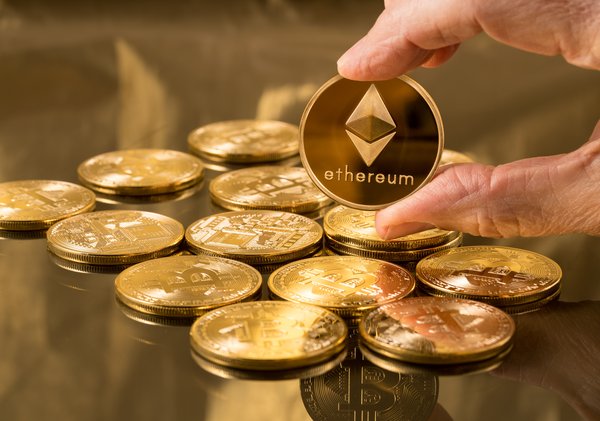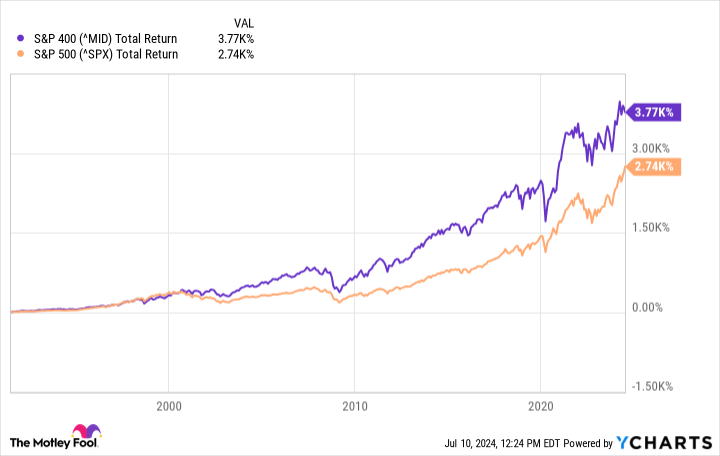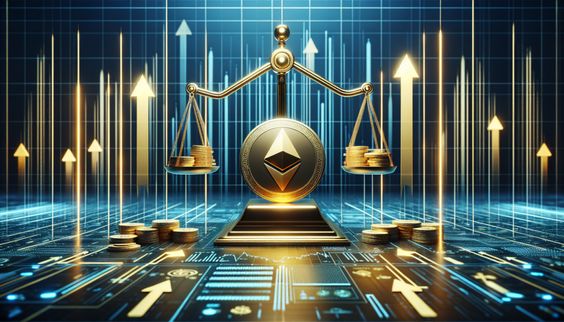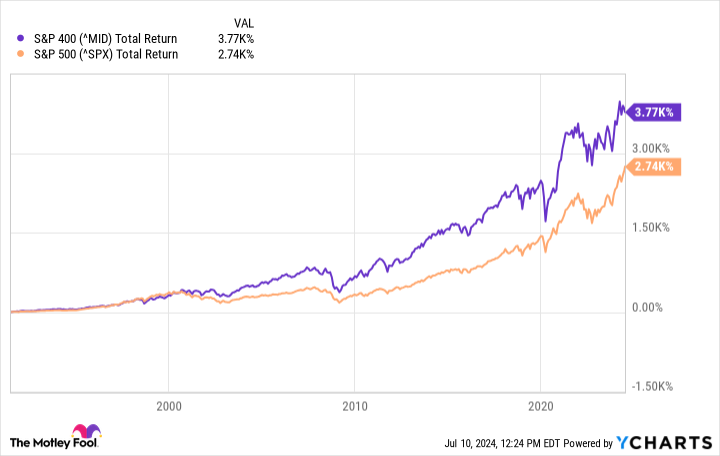ETFs
Investing in Ethereum ETFs: what you need to know

Ethereum (ETH -0.43%) exchange-traded funds (ETFs) offer a convenient way to invest in the second largest cryptocurrency by market capitalization, similar to buying stocks. Much like in the early days of Bitcoin ETFs, the Ethereum ETF landscape currently offers options based on futures contracts, while Cash ETFs are still awaiting regulatory approval.
Cryptocurrency
Cryptocurrency is a decentralized and secure digital currency, based on blockchain technology, which offers new investment opportunities.
In this article, we will explore the Ethereum ETFs available, looking at both currently accessible futures-based products and the potential future of spot Ethereum ETFs. We will also provide guidance on how to invest in these ETFs, offering an overview of their structure, the benefits they offer, and considerations for investors looking to add exposure to Ethereum to their investment portfolios.
Image source: Getty Images.
What is this?
What is an Ethereum ETF?
The simplest way to understand Ethereum ETFs is to divide them into two main components. Ethereum itself is a blockchain platform with its own cryptocurrency, Ether (ETH). It is widely used for its smart contract functionality, which enables automatic, decentralized agreements that execute when their conditions are met.
Ethereum (ETH)
Ethereum is a blockchain created in 2015 that relies on a decentralized network of computers around the world.
An ETF is an open-ended investment fund that holds assets such as stocks, commodities, bonds or even cryptocurrencies. ETFs are unique because they trade on an exchange much like individual stocks, providing the liquidity and accessibility that traditional mutual funds don’t.
Combining these elements, an Ethereum ETF is a type of investment fund that owns Ethereum directly or invests in related assets. derivatives like Ethereum futures. This setup allows investors to gain exposure to Ethereum’s market movements without purchasing and holding the actual cryptocurrency through a crypto exchange or dealing with the complexities of digital wallet security.
Essentially, when you buy shares of an Ethereum-based ETF, you are indirectly investing in the performance of Ethereum with all the ease of trading traditional stocks.
Assets
What do Ethereum ETFs contain?
Due to regulatory constraints, US Ethereum ETFs are currently unable to directly hold Ethereum. Instead, these ETFs gain exposure to Ethereum through Ethereum eventually contracts traded on the Chicago Mercantile Exchange (CME). These futures contracts allow investors to speculate on the future price of Ethereum without the challenges – such as security and custody – of actually managing the assets. cryptocurrencies.
Since these futures contracts are based on the anticipated future price of Ethereum, they provide investors with a method to gain indirect exposure to Ethereum’s price dynamics. Due to the nature of forward trading, which requires a marginIt is common for Ethereum ETFs to hold significant holdings of cash or cash equivalents.
Low-risk assets, such as money market funds, commercial paper or Treasury bills are often used as collateral for these transactions. This setup ensures that the ETF can meet potential margin calls during periods of high volatility, thereby securing leveraged positions taken on futures contracts.
What is Ethereum?
What is Ethereum?
Ethereum, launched in 2013 by Vitalik Buterinis a complete program decentralized finance (DeFi) platform for decentralized applications (dApps) and smart contracts that operate autonomously without a central authority. Ether is the native cryptocurrency of Ethereum and is essential for the operation of dApps and the execution of smart contracts.
It serves as “gas,” paying for the computing resources needed to execute operations and giving Ethereum its value. Ether trades on various cryptocurrency exchanges and is used as both an investment and a utility token. In September 2022, Ethereum underwent a major update, going from a proof of work (PoW) has a proof of stake (PoS) system.
This change significantly reduced the platform’s energy consumption by changing the way transactions are verified and blocks are added to the blockchain. Instead of miners solving puzzles, validators now stake Ether for the right to validate transactions and yields, improving Ethereum’s sustainability and scalability.
Spot ETF
Ethereum Spot ETF Approved
Although Canadian securities regulators have authorized spot Ethereum and other Cryptocurrency ETF on sale since April 2021, the United States Securities and Exchange Commission (SEC) has been slower to adopt similar measures. This landscape changed significantly on May 23, 2024, when the SEC finally gave Ethereum ETFs the green light.
However, these ETFs have not yet started trading in the market since the SEC has yet to approve individual prospectuses submitted by ETF issuers seeking to launch these products. SEC Chairman Gary Gensler has suggested the process should be completed by the end of summer, although no specific timeline has been confirmed.
However, once these approvals are in place, Ethereum spot ETFs will be allowed to begin trading on exchanges.
How to buy
How to Invest in Ethereum ETFs
Investing in Ethereum ETFs is simple and follows the same procedure as trading any other ETF or stock. Here’s a step-by-step guide to help you get started:
- Determine your position size: Decide how much of your portfolio you want to allocate to Ethereum ETFs in terms of monetary value. Consider whether this the investment is suitable with your overall risk tolerance and investment strategy compared to regular actions.
- Choose the right ETF: In the following section, we have provided a table of the top Ethereum ETFs currently available. Choose the one that best suits your needs based on factors like fees, liquidity, and past performance.
- Search for the ETF on your brokerage: Locate the ETF by typing its full name or ticker symbol into your brokerage’s search function. Be sure to select the “stocks” or “shares” option to ensure you are purchasing the ETF itself and not options based on it.
- Enter an order: Specify the number of shares you wish to purchase. You can place a market orderwhich executes the transaction at the next available price, or a limited orderwhich sets a maximum price you are willing to pay and only executes if the stock price reaches or falls below that threshold.
- Finish: If your order is successful, your brokerage account will reflect the purchase, with the ETF shares added and the corresponding cash amount deducted.
The first three
The three best Ethereum ETFs
Here is a look at the largest Ethereum ETFs on the market in terms of assets under management (AUM):
|
ProShares Ether Strategy ETF |
0.95% |
|
|
VanEck Ethereum Strategy ETF |
0.66% |
|
|
Bitwise Bitcoin and Ether Equal Weight Strategy ETF |
0.85% |
Related investment topics
Perspectives
Outlook for Ethereum ETFs
Currently, investors can trade Ethereum futures ETFs, and with recent SEC approval, Ethereum spot ETFs are expected to hit the market soon. ETFs offer the convenience of trading through a regular brokerage account, eliminating the need for a cryptocurrency exchange or self-custody of digital assets.
However, it is important to note that these ETFs incur expense ratios and do not offer the 24/7 trading capability that drives investments in the cryptocurrency sector provide. Looking to the future, much like Bitcoin ETFwhich have generated significant investor interest and led to new price highs for Bitcoin, Ethereum ETFs could also benefit from significant inflows and increased interest from investors. individual investors.
FAQs
FAQs on Investing in Ethereum ETFs
Which Ethereum ETF is best?
down angle up angle
There’s no universal answer, but the VanEck Ethereum Strategy ETF (NYSEMKT:EFUT) is a great candidate with a lower expense ratio of 0.66%.
Is there an Ethereum ETF in the US?
downward angle upward angle
US investors can currently purchase Ethereum futures ETFs. The Spot Ethereum ETFs, which were recently approved, are still awaiting launch.
How to get Ethereum ETFs?
downward angle upward angle
You can buy Ethereum futures ETF shares through most brokerages. Spot Ethereum ETFs are still not available.
Is there an Ethereum spot ETF?
downward angle upward angle
Spot Ethereum ETFs are available on Canadian exchanges, denominated in Canadian and US dollars. US-listed spot Ethereum ETFs are still not available, although they have received regulatory approval.
Tony Dong has no position in any of the stocks mentioned. The Motley Fool holds positions in and recommends Ethereum. The Motley Fool has a disclosure policy.
Source
ETFs
Missed the Bull Market Resumption? 3 ETFs to Help You Build Wealth for Decades

The market’s rebound from the 2022 bear market was not only unexpected. It was also bigger than expected. S&P 500 The stock price is up 60% from the bear market low, despite no clear signs at the time that such a rally was in the works. Chances are you missed at least part of this current rally.
If so, don’t be discouraged: you’re in good company. You’re also far from financially ruined. While you can’t go back and make up for the missed opportunity, for long-term investors, the growth potential is much greater.
If you want to make sure you don’t miss the next big bull run, you might want to tweak your strategy a bit. This time around, you might try buying fewer stocks and focusing more on exchange traded funds (or ETFs), which are often easier to hold when things get tough for the overall market.
With that in mind, here’s a closer look at three very different ETFs to consider buying that could – collectively – complement your portfolio brilliantly.
Let’s start with the basics: dividend growth
Most investors naturally favor growth, choosing growth stocks to achieve that goal. And the strategy usually works. However, most long-term investors may not realize that they can get the same type of net return with boring dividend stocks like the ones held in the portfolio. Vanguard Dividend Appreciation ETF (NYSEMKT: VIG) which reflects the S&P US Dividend Growth Index.
As the name suggests, this Vanguard fund and its underlying index hold stocks that not only pay consistent dividends, but also have a history of consistently increasing dividends. To be included in the S&P US Dividend Growers Index, a company must have increased its dividend every year for at least the past 10 years. In most cases, however, they have been doing so for much longer.
The ETF’s current dividend yield of just under 1.8% isn’t exactly exciting. In fact, it’s so low that investors might wonder how this fund is keeping up with the broader market, let alone growth stocks. What’s being grossly underestimated here is the sheer magnitude of these stocks. dividend growthOver the past 10 years, its dividend per share has nearly doubled, and more than tripled from 15 years ago.
The reason is that solid dividend stocks generally outperform their non-dividend-paying counterparts. Calculations by mutual fund firm Hartford indicate that since 1973, S&P 500 stocks with a long history of dividend growth have averaged a single-digit annual return, compared with a much more modest 4.3% annual gain for non-dividend-paying stocks, and an average annual return of just 7.7% for an equal-weighted version of the S&P 500. The numbers confirm that there’s a lot to be said for reliable, consistent income.
The story continues
Then add capital appreciation through technology
That said, there’s no particular reason why your portfolio can’t also hold something a little more volatile than a dividend-focused holding. If you can stomach the volatility that’s sure to continue, take a stake in the Invesco QQQ Trust (NASDAQ: QQQ).
This Invesco ETF (often called the “cubes” or the triple-Q) is based on the Nasdaq-100 index. Typically, this index consists of 100 of the Nasdaq Composite IndexThe index is one of the largest non-financial indices at any given time. It is updated quarterly, although extreme imbalance situations may result in unplanned rebalancing of the index.
That’s not what makes this fund a must-have for many investors, though. It turns out that most high-growth tech companies choose to list their shares through the Nasdaq Sotck exchange rather than other exchanges like the New York Stock Exchange or the American Stock ExchangeNames like Apple, MicrosoftAnd Nvidia are not only Nasdaq-listed securities. They are also the top holdings of this ETF, with Amazon, Meta-platformsand Google’s parent company AlphabetThese are of course some of the highest-yielding stocks on the market in recent years.
This won’t always be the case. Just as companies like Nvidia and Apple have squeezed other names out of the index to make room for their stocks, these current names could also be replaced by other names (although it will likely be a while before that happens). It’s the proverbial life cycle of the market.
This shift, however, will likely be driven by technology companies that are offering revolutionary products and services. Owning a stake in the Invesco QQQ Trust is a simple, low-cost way to ensure you’re invested in at least most of their stocks at the perfect time.
Don’t forget indexing, but try a different approach
Finally, while Triple-Q and Vanguard Dividend Appreciation funds are smart ways to diversify your portfolio over the long term, the good old indexing strategy still works. In other words, rather than risk underperforming the market by trying to beat it, stick to tracking the long-term performance of a broad stock index.
Most investors will opt for something like the SPDR S&P 500 Exchange Traded Fund (NYSEMKT:SPY), which of course mirrors the large-cap S&P 500 index. And if you already own one, great: stick with it.
If and when you have some spare cash to put to good use, consider starting a mid-cap funds as the iShares Core S&P Mid-Cap ETF (NYSEMKT: IJH) instead. Why? Because you’ll likely get better results with this ETF than you will with large-cap index funds. Over the past 30 years, S&P 400 Mid-Cap Index significantly outperformed the S&P 500.
^MID Chart
The disparate degree of gains actually makes sense. While no one disputes the solid foundations on which most S&P 500 companies are built, they are in many ways victims of their own size: It’s hard to get bigger when you’re already big. This is in contrast to the mid-cap companies that make up the S&P 400 Mid Cap Index. These organizations have moved past their rocky, shaky early years and are just entering their era of high growth. Not all of them will survive this phase, but companies like Advanced microsystems And Super microcomputer Those that survive end up being incredibly rewarding to their patient shareholders.
Should You Invest $1,000 in iShares Trust – iShares Core S&P Mid-Cap ETF Right Now?
Before purchasing shares of iShares Trust – iShares Core S&P Mid-Cap ETF, consider the following:
The Motley Fool Stock Advisor analyst team has just identified what they believe to be the 10 best stocks Investors should buy now…and the iShares Trust – iShares Core S&P Mid-Cap ETF wasn’t one of them. The 10 stocks selected could generate monstrous returns in the years to come.
Consider when Nvidia I made this list on April 15, 2005… if you had $1,000 invested at the time of our recommendation, you would have $791,929!*
Stock Advisor provides investors with an easy-to-follow blueprint for success, including portfolio construction advice, regular analyst updates, and two new stock picks each month. The Stock Advisor service offers more than quadrupled the return of the S&P 500 since 2002*.
*Stock Advisor returns as of July 8, 2024
John Mackey, former CEO of Amazon’s Whole Foods Market, is a member of The Motley Fool’s board of directors. Randi Zuckerberg, former director of market development and spokesperson for Facebook and sister of Meta Platforms CEO Mark Zuckerberg, is a member of The Motley Fool’s board of directors. Suzanne Frey, an executive at Alphabet, is a member of The Motley Fool’s board of directors. James Brumley has positions in Alphabet. The Motley Fool has positions in and recommends Advanced Micro Devices, Alphabet, Amazon, Apple, Meta Platforms, Microsoft, Nvidia, and Vanguard Specialized Funds – Vanguard Dividend Appreciation ETF. The Motley Fool recommends Nasdaq and recommends the following options: long January 2026 $395 calls on Microsoft and short January 2026 $405 calls on Microsoft. The Motley Fool has a position in Advanced Micro Devices, Alphabet, Amazon, Apple, Meta Platforms, Microsoft, Nvidia, and Vanguard Specialized Funds – Vanguard Dividend Appreciation ETF. The Motley Fool recommends Nasdaq and recommends the following options: long January 2026 $395 calls on Microsoft and short January 2026 $405 calls on Microsoft. disclosure policy.
Missed the Bull Market Resumption? 3 ETFs to Help You Build Wealth for Decades was originally published by The Motley Fool
ETFs
This Simple ETF Could Turn $500 a Month Into $1 Million

This large-cap ETF offers investors the potential for above-market returns while minimizing risk.
It’s always inspiring to hear stories of people who invested in a company and made tons of money as the company grew and became successful. While these stories are a testament to the power of investing, they can also be misleading. That’s not because it doesn’t happen often, but because you don’t have to make a big splash on a single company to make a lot of money in the stock market.
Invest regularly in exchange traded funds (AND F) is a great way to build wealth. ETFs allow you to invest in dozens, hundreds, and sometimes thousands of companies in a single investment. For investors looking for an ETF that can help them become millionaires, look no further than the Vanguard Growth ETFs (VUG 0.61%).
A history of outperforming the market
Since its launch in January 2004, this ETF has outperformed the market (based on S&P 500 Back), with an average total return of around 11.6%. The returns are even more impressive when looking back over the past decade, with the ETF posting an average total return of around 15.7%.
Total VUG Performance Level data by YCharts
The ETF’s past success doesn’t mean it will continue on this path, but for the sake of illustration, let’s take a middle ground and assume it averages about 13% annual returns over the long term. Averaging those returns, monthly investments of $500 could top the $1 million mark in just over 25 years.
Assuming (emphasis on the word “assume”) that the ETF continues to generate an average total return of 15.7% over the past decade, investing $500 a month could get you past $1 million in about 23 years. At an annual return of 11.6%, that would take nearly 28 years.
There is no way to predict the future performance of the ETF, but the most important thing is the power of time and Compound profit. Earning $1 million by saving alone is a difficult and unachievable task for most people. However, it becomes much more achievable if you give yourself time and make regular investments, no matter how small.
So why choose the Vanguard Growth ETF?
This ETF can offer investors the best of both worlds. On the one hand, since it only contains large cap stocksIt offers more stability and less volatility than you typically find with smaller growth stocks. At the other end, the focus on growth means it is built with the goal of outperforming the market.
Investing involves a tradeoff between risk and return, and this ETF falls somewhere in the middle for the most part. That’s not just because it only contains large-cap stocks. It’s also because large-cap stocks are leading the way. Here are the ETF’s top 10 holdings:
- Microsoft: 12.60%
- Apple: 11.51%
- Nvidia: 10.61%
- Alphabet (both share classes): 7.54%
- Amazon: 6.72%
- Meta-platforms: 4.21%
- Eli Lilly: 2.88%
- You’re here: 1.98%
- Visa: 1.72%
The Vanguard Growth ETF is not as diversified as other broad ETFs, with the top 10 holdings making up nearly 60% of the fund and the “The Magnificent Seven” with stocks accounting for about 55%. However, many of these companies (particularly mega-cap technology stocks) have been among the best performers in the stock market over the past decade and still have great growth opportunities ahead of them.
MSFT Total Return Level data by YCharts
Big tech stocks are expected to continue to see growth in areas such as cloud computing, artificial intelligenceand cybersecurity; Eli Lilly will benefit from advances in biotechnologyTesla is one of the leaders in electric vehicles, which are still in the early stages of development; and Visa is expected to be one of the forerunners as the world moves toward more digital payments.
ETF concentration adds risk, especially if Microsoft, Apple or Nvidia is experiencing a slowdownBut these companies are well positioned to drive long-term growth despite any short-term setbacks that may arise. Consistent investments over time in the Vanguard Growth ETF should pay off for investors.
Randi Zuckerberg, former head of market development and spokesperson for Facebook and sister of Meta Platforms CEO Mark Zuckerberg, is a member of The Motley Fool’s board of directors. Suzanne Frey, an executive at Alphabet, is a member of The Motley Fool’s board of directors. John Mackey, former CEO of Whole Foods Market, an Amazon subsidiary, is a member of The Motley Fool’s board of directors. Stefon Walters has positions in Apple and Microsoft. The Motley Fool has positions in and recommends Alphabet, Amazon, Apple, Meta Platforms, Microsoft, Nvidia, Tesla, Vanguard Index Funds-Vanguard Growth ETF, and Visa. The Motley Fool recommends the following options: long January 2026 $395 calls on Microsoft and short January 2026 $405 calls on Microsoft. The Motley Fool has a position in shares of Apple and Microsoft. disclosure policy.
ETFs
Ethereum ETFs Could Bring in $1 Billion a Month

In a recent interview with Bloomberg, Kraken’s chief strategy officer Thomas Perfumo predicted that Ethereum ETFs could attract between $750 million and $1 billion in monthly investments.
“Market sentiment is being priced in. I think the market has priced in something like $750 million to $1 billion of net inflows into Ethereum ETF products each month,” Perfumo said.
In the interviewPerfumo noted that if inflows exceed expectations, it could provide strong support to the industry and potentially drive Ethereum to new record highs.
This creates positive support for the industry, if we go beyond that, note that Bitcoin was at a rate above $2.5 billion
He said
Moreover, the hype around Ethereum ETFs has already sparked some optimism among investors. After the SEC approved the 19b-4 filing, Ethereum’s price jumped 22%, attracting investment into crypto assets.
This price movement shows how sensitive the market is to regulatory changes and the growth potential once ETFs are approved.
Perfumo also highlighted other factors supporting current market sentiment, including the upcoming US elections and a potential interest rate cut by the Federal Reserve. Recent US CPI data suggests disinflation on a monthly and annual basis, with some traditional firms predicting rate cuts as early as September.
These broader economic factors, combined with developments in the crypto space, are shaping the overall market outlook.
Regarding Kraken’s strategy, Perfumo highlighted the exchange’s goal of driving cryptocurrency adoption through strategic initiatives. When asked about rumors of Kraken going public, he reiterated that the company’s intention is instead to broaden cryptocurrency adoption.
Read also : Invesco, Galaxy Cut Ether ETF Fees to 0.25% in Competitive Market
ETFs
Kraken Executive Expects Ethereum ETF Launch to “Lift All Boats”

Kraken Chief Strategy Officer Thomas Perfumemo said: Ethereum ETFs (ETH) could help the crypto sector while commenting on political developments in the United States.
On July 12, Perfumo told Bloomberg that spot Ethereum ETFs would attract capital flows while drawing attention to crypto, noting:
“It’s a rising tide, which lifts the whole history of the boat.”
Perfumo further explained that the final value of Ethereum “depends on the Ethereum ETF.”
He said the cryptocurrency market is “pricing in” between $750 million and $1 billion in net inflows into Ethereum products on a monthly basis, which would imply that Ethereum could reach all-time highs between $4,000 and $5,000.
Perfumo also compared expectations to Bitcoin’s all-time high in March, which he called a “silent spike” that occurred without any evidence of millions of new investors entering the industry.
Political evolution
Perfumo also commented on political developments. At the beginning of the interview, he said that the results of the US elections “will set the tone for policymaking and the legislative agenda for the next four years.”
He also stressed the importance of legislative action and clarity and noted that recent developments show bipartisan support in Congress.
The House recently voted to pass the Financial Innovation and Technology for the 21st Century Act (FIT21) and attempted to repeal controversial SEC accounting rules with the Senate. However, the president Joe Biden Chosen to veto The resolution.
Perfume said:
“Even if you encounter obstacles at the executive level, [there’s] “There is still good progress to come.”
He added that the Republican Party appears “more pro-crypto.” [and] “more progressive” on the issue, noting Donald Trump plans to attend the Bitcoin Conference in Nashville.
Trump has also made numerous statements in support of pro-crypto policy, including at recent campaign events in Wisconsin And San Francisco.
Mentioned in this article
-

 DeFi1 year ago
DeFi1 year agoSwitchboard Revolutionizes DeFi with New Oracle Aggregator
-

 News1 year ago
News1 year agoLatest Business News Live Updates Today, July 11, 2024
-

 DeFi1 year ago
DeFi1 year agoIs Zypto Wallet a Reliable Choice for DeFi Users?
-

 DeFi1 year ago
DeFi1 year ago👀 Lido prepares its response to the recovery boom
-

 Fintech1 year ago
Fintech1 year agoFinTech LIVE New York: Mastercard and the Power of Partnership
-

 DeFi1 year ago
DeFi1 year agoEthena downplays danger of letting traders use USDe to back risky bets – DL News
-

 Fintech1 year ago
Fintech1 year ago121 Top Fintech Companies & Startups To Know In 2024
-

 ETFs1 year ago
ETFs1 year agoGold ETFs see first outing after March 2023 at ₹396 cr on profit booking
-

 DeFi1 year ago
DeFi1 year agoTON Network Surpasses $200M TVL, Boosted by Open League and DeFi Growth ⋆ ZyCrypto
-

 Fintech1 year ago
Fintech1 year agoFintech unicorn Zeta launches credit as a UPI-linked service for banks
-

 ETFs1 year ago
ETFs1 year agoLargest US Bank Invests in Spot BTC ETFs While Dimon Remains a Bitcoin Hater ⋆ ZyCrypto
-

 News1 year ago
News1 year agoSalesforce Q1 2025 Earnings Report (CRM)







